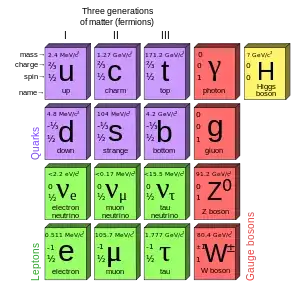Although a photon has no (rest) mass, it does have a measurable speed. Its movement can be altered by gravity. A photon "travels". If I turn on a flashlight, seen by someone at a distance, the photons from that flashlight traveled, at the speed of light, from the flashlight to the observer. But what "force" instantly starts the movement of a photon at the speed of light?
3 Answers
Photons aren't accelerated to the speed of light1. Once a photon comes into existence, it is always traveling at the local, constant, speed of light $c$. If you're wondering more about the source of energy for photons: remember that a photon is an electromagnetic wave, which is produced by perturbations of an electromagnetic field, e.g. from the acceleration of charged particles.
Consider the analogy to a wave on a string. Here, the string is analogous to the electromagnetic field, and the wave is like the photon. You can create a wave by shaking the string (like accelerating charged particles) perpendicular to the direction of wave propagation. You never 'accelerate' the string itself in the direction of wave-motion. Once the wave exists, it propagates at a fixed speed.
1: Photons can accelerate by changing direction---i.e. when influenced by a gravitational field (as you point out).
- 14,395
Have a look at the standard model accepted as "elementary particles"

The Standard Model of elementary particles, with the three generations of matter, gauge bosons in the fourth column and the Higgs boson in the fifth.
The fourth from the left in the first row is the photon.
An "elementary particle" is an entity described mathematically very well by quantum mechanics, and when one is seeking for the origin of an "elementary particle", being manifested as an electron macroscopically or a photon, the quantum mechanical picture is unavoidable. A photon, no exceptions, is created/generated by a transition/interaction of a charged "elementary particle" with a potential created by other "charged elementary particles". If the photon comes from atomic/molecular transitions potential wells describe their generation. If from acceleration/deceleration of charges in fields quantum electrodynamics is used .
Let us take an atom whose outermost electron is in an excited state. It will decay to the lower state emitting the energy as a photon.At its creation , the photon travels at the speed of light, it is one of its basic attributes, and takes the energy according to E=h*nu ( nu the frequency). During the transition, the time it takes for the photon to be released, the heisenberg uncertainty principle holds, and the creation of the photon is uncertain within that time.
The "force" here is the energy quantum that is released by the transition of the electron from a higher energy orbital to a lower..
- 236,935
A simple poof that there is no force acting on the photon:
There is no force that makes the emitted photon to accelerate, and the photon does not accelerate. For example, it is the transition an electron makes from a high energy level to a lower energy level that creates a photon. This transition is a disturbance in the vacuum that travels at the speed of light. This is because the electrical permitivity, $\epsilon_0$, and magnetic permeability, $\mu_0$, of the vacuum have the values they have. Unlike waves in a string that require some tension in the string, and therefore the oscillating partiles have acceleration, the electromagnetic waves do not require such force because the particle that is moving, the photon, has zero mass.
We can see this from the following simple mathematical argument:
The photon has an amount of energy which is related to its momentum via the relativistic equation
$E=pc$.
From this we can write $p=\frac{E}{c}=\frac{h}{\lambda}$
where $h$ is Planck's constant, and $\lambda$ is the wavelength of the photon’s electromagnetic field. Since $h$ and $\lambda$ are fixed the momentum is also fixed. So no force.
If one insists and wants to treat the photon as a classical object, one can try to find the force acting on the photon as follows
$F=\frac{dp}{dt}$
$=\frac{1}{c}\frac{dE}{dt}$
$=\frac{h}{c}\frac{df}{dt}=0$ since $f$ is fixed.
So it is clear that no force is needed to make the photon accelerate. The photon is created instantly to move at the speed of light because it is massless.
- 3,890